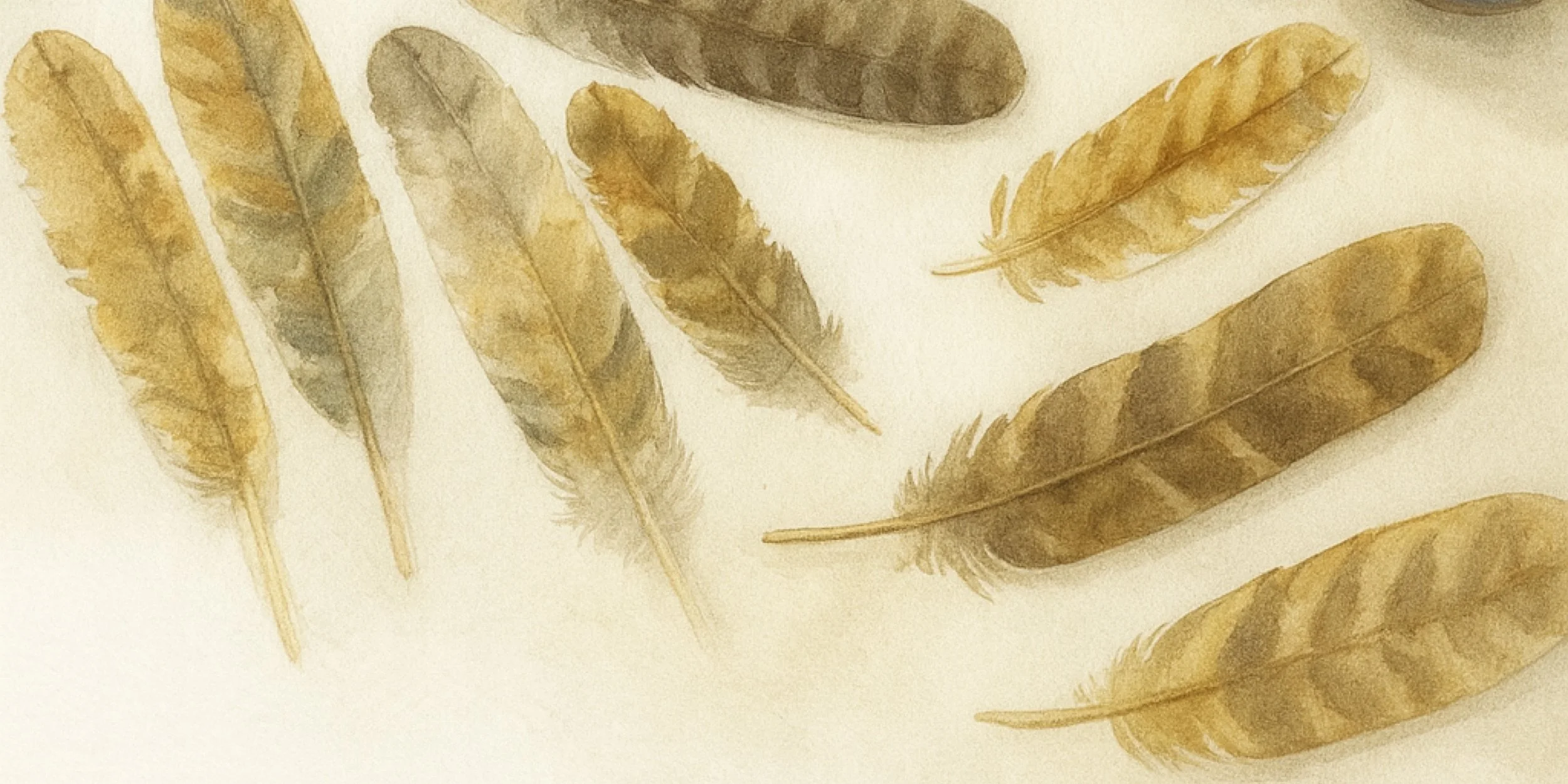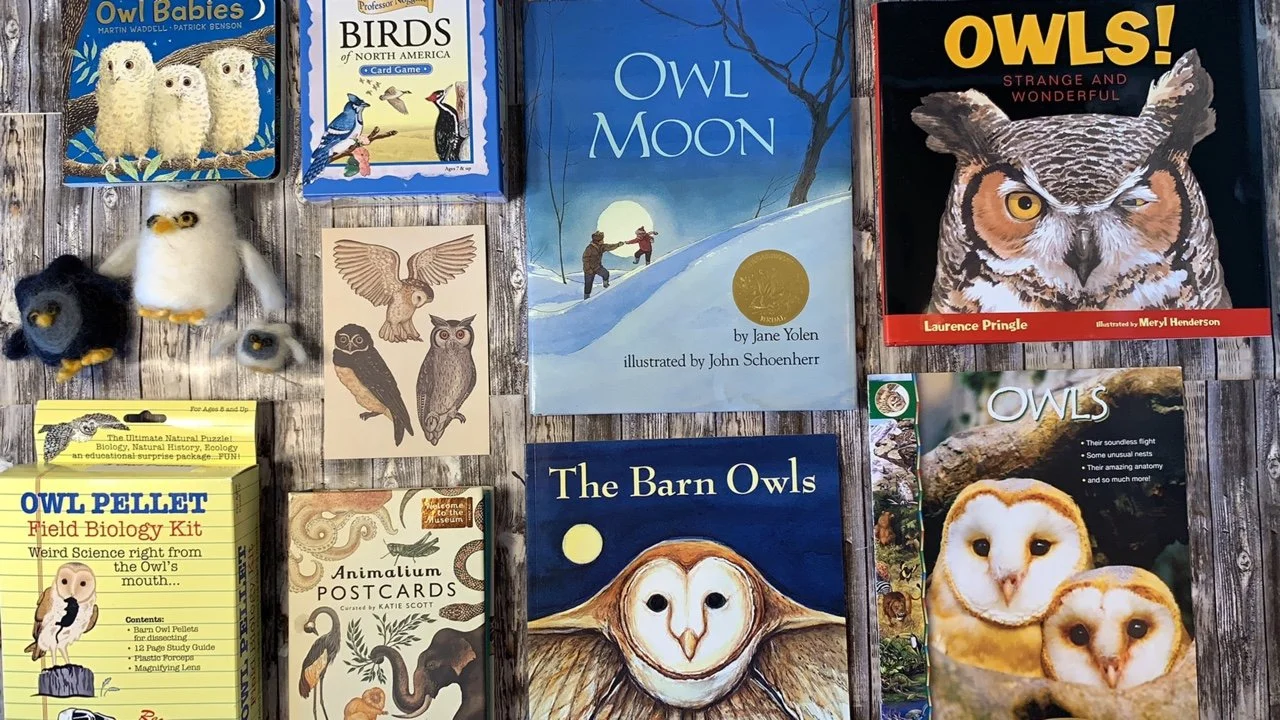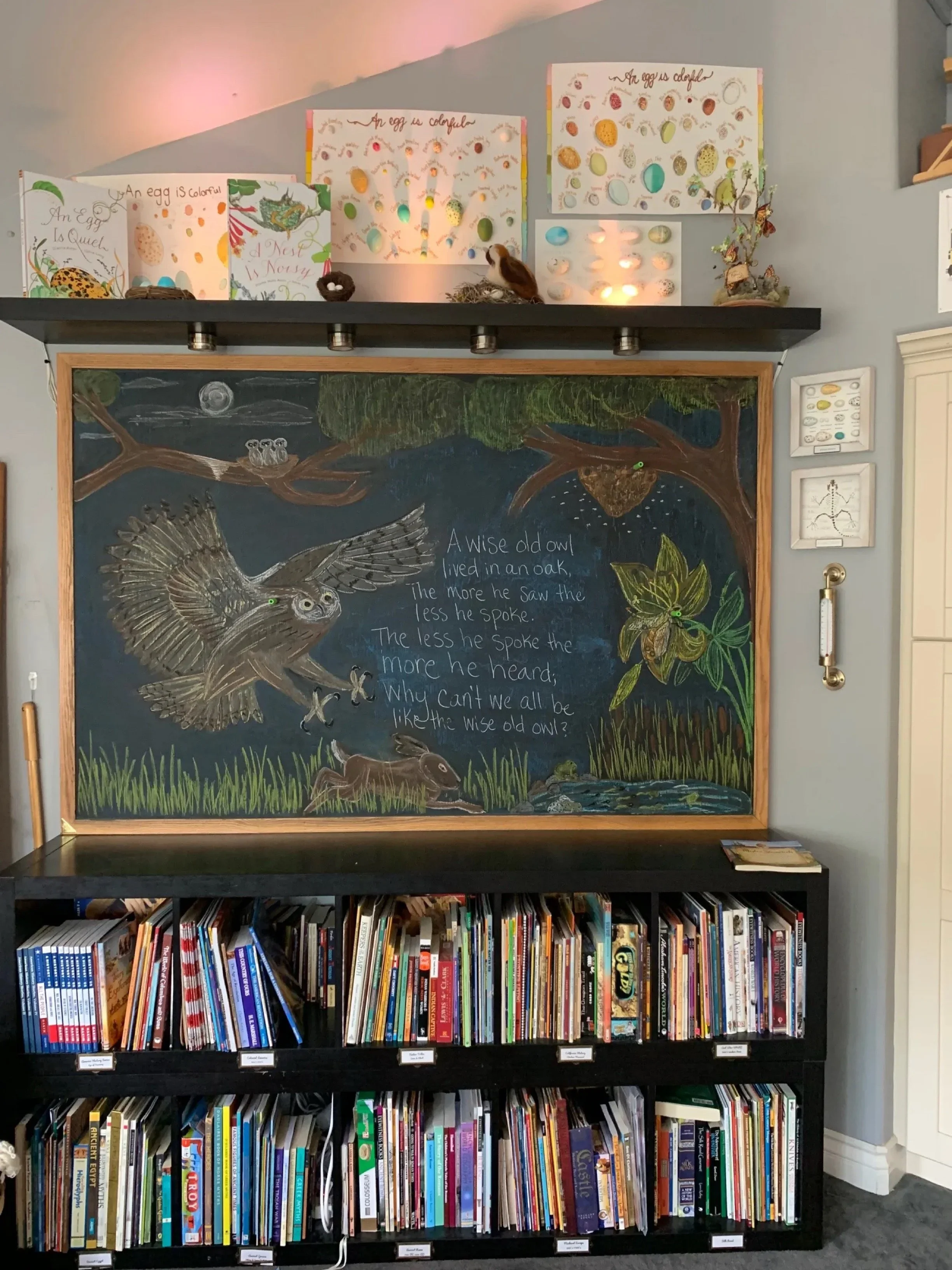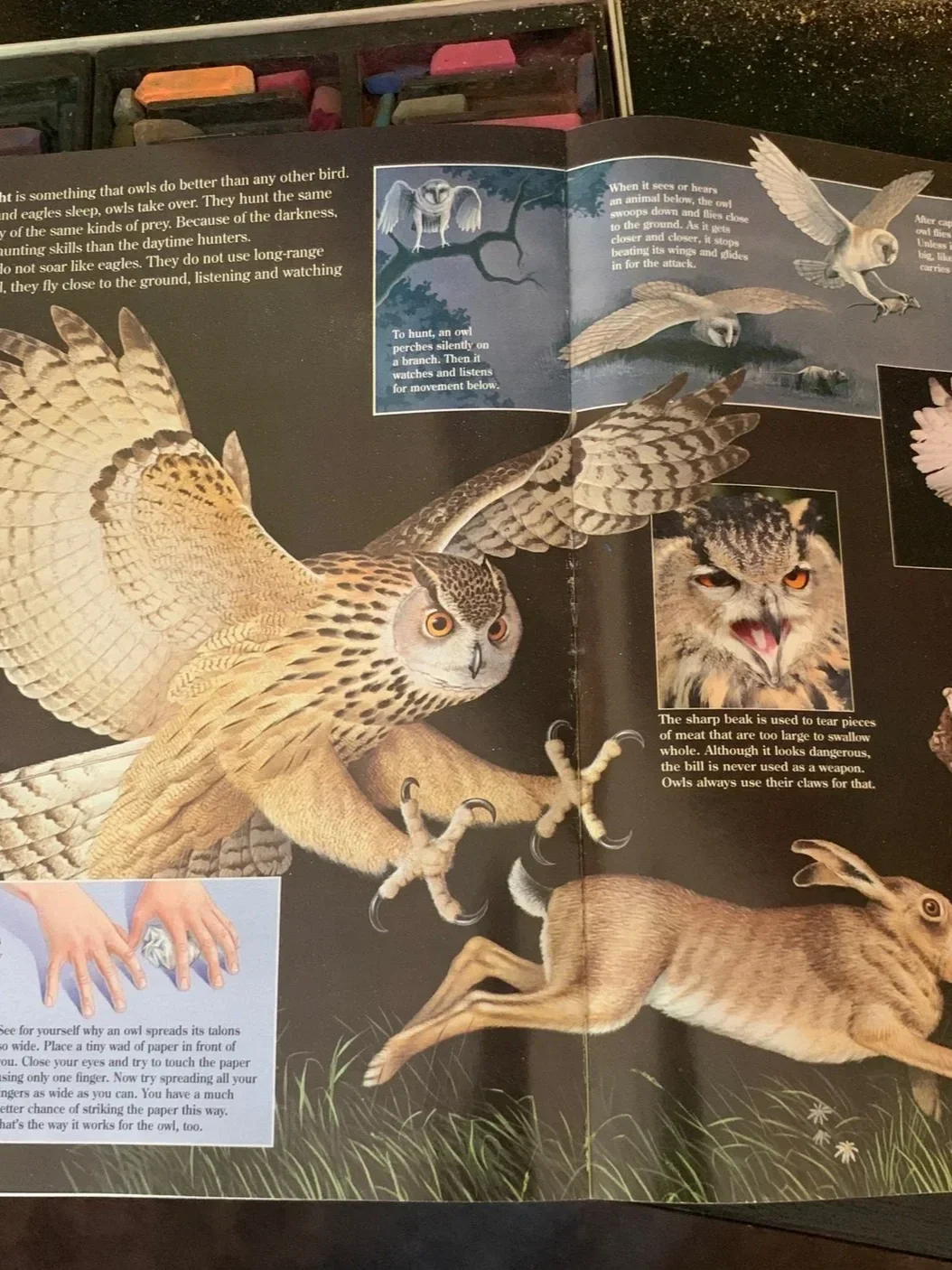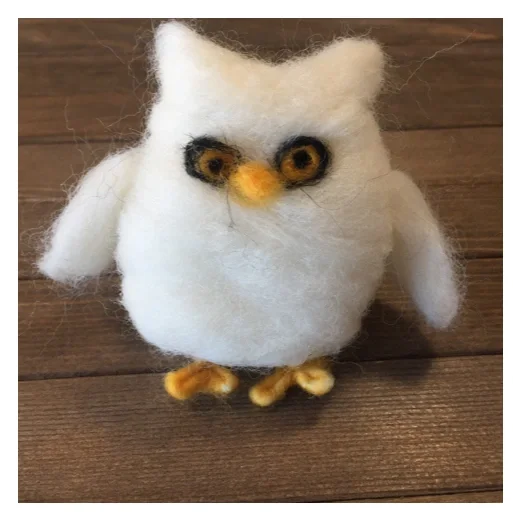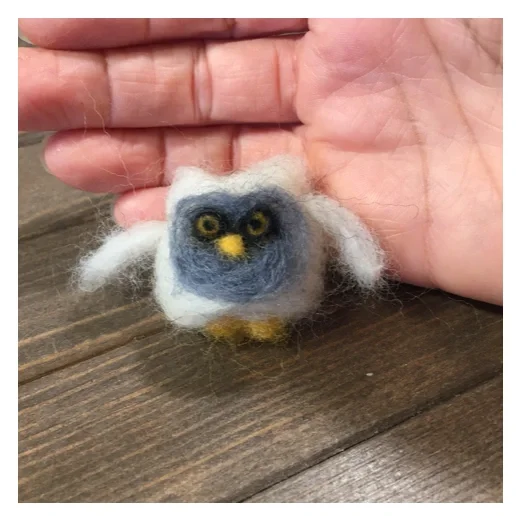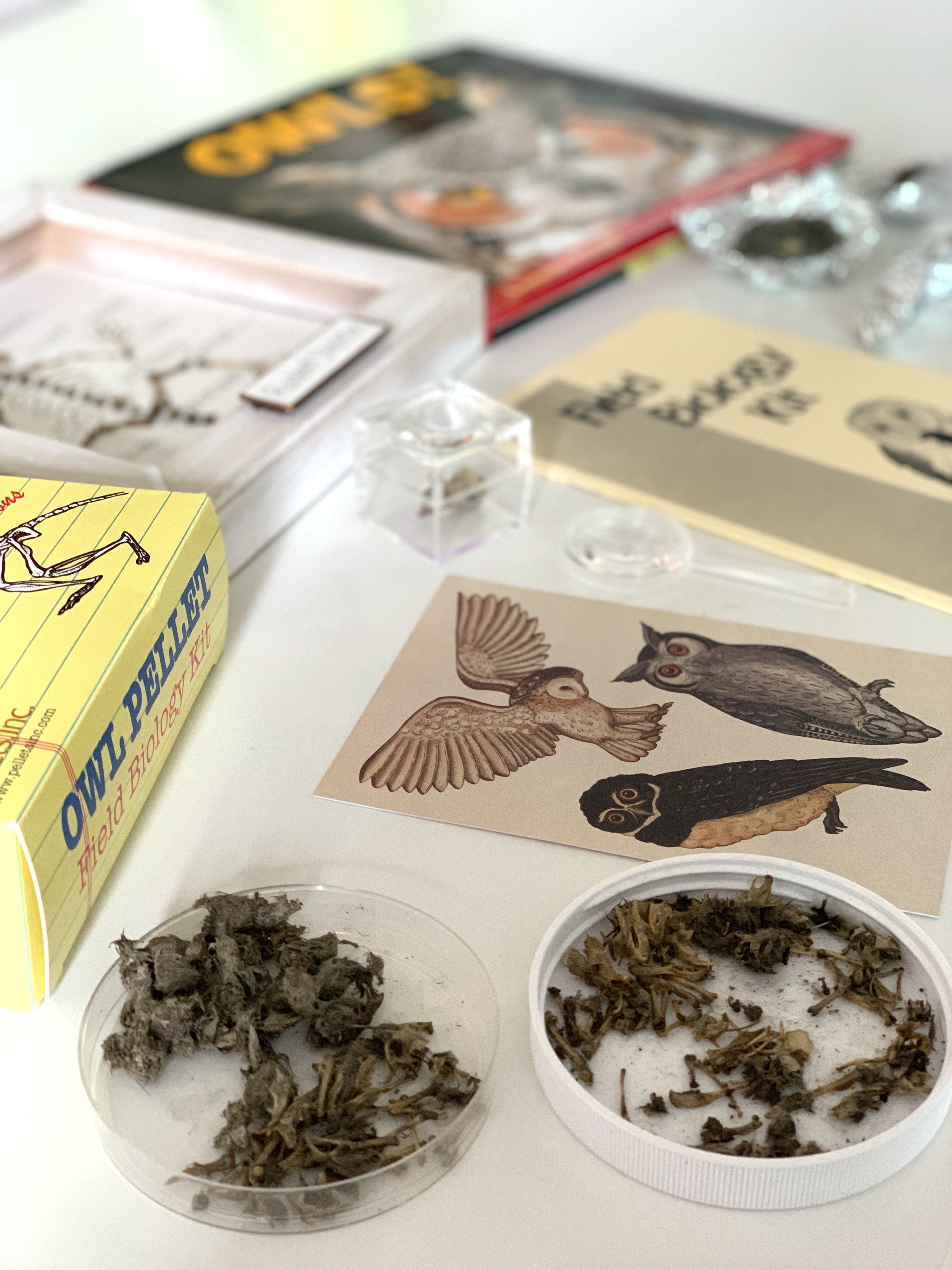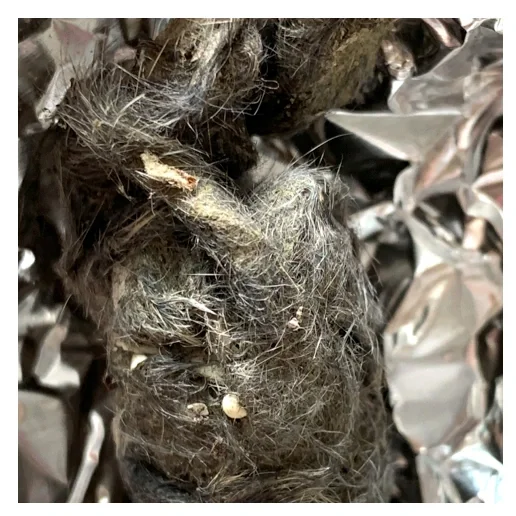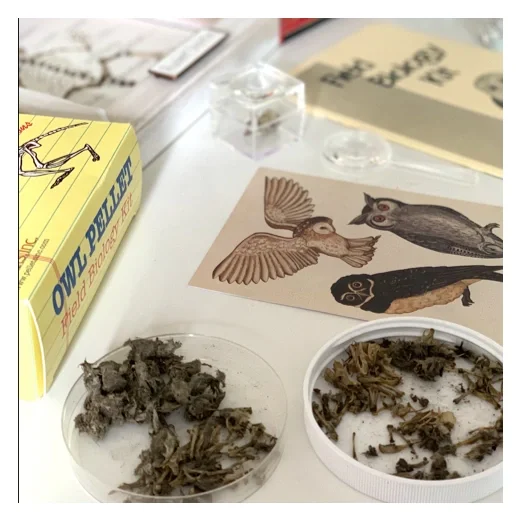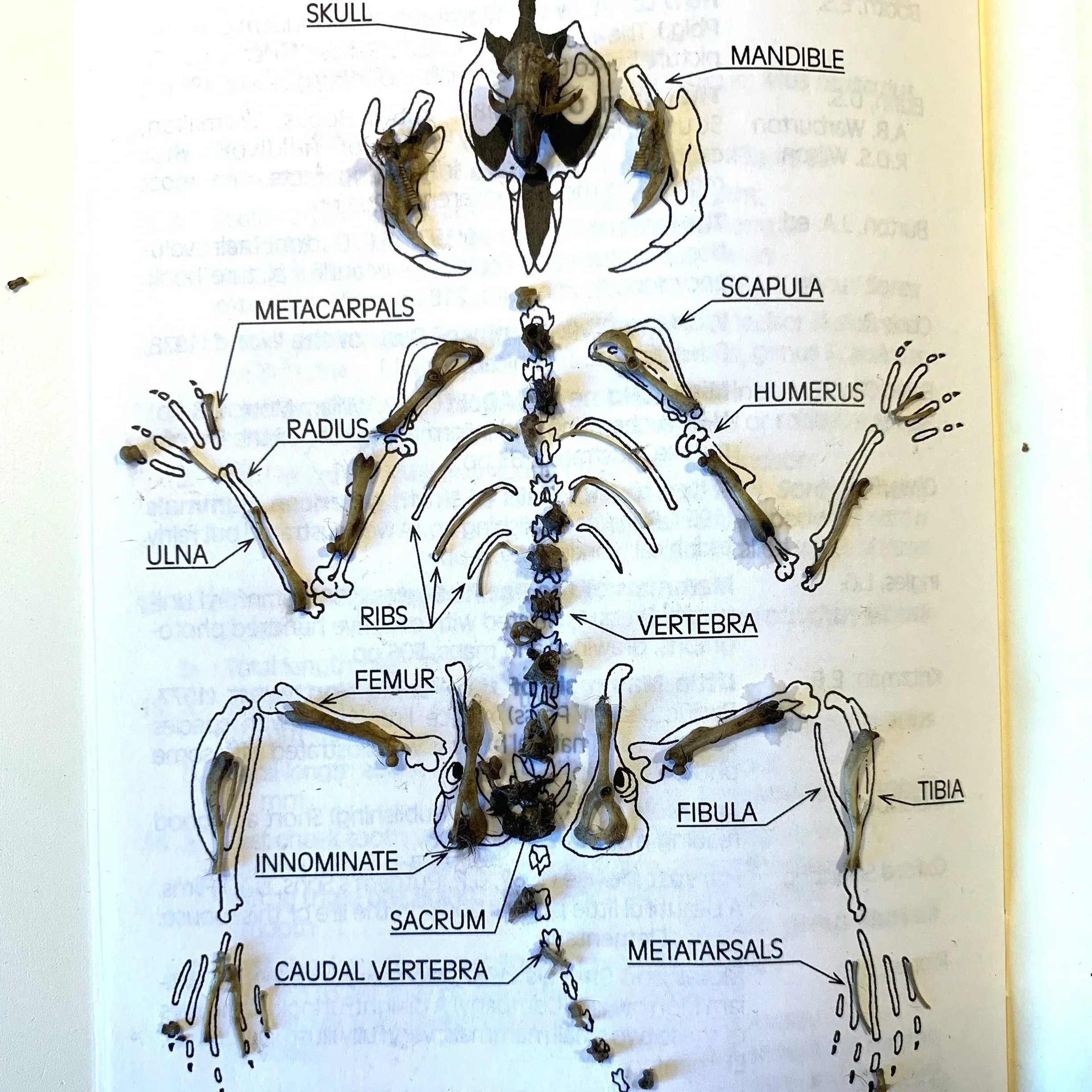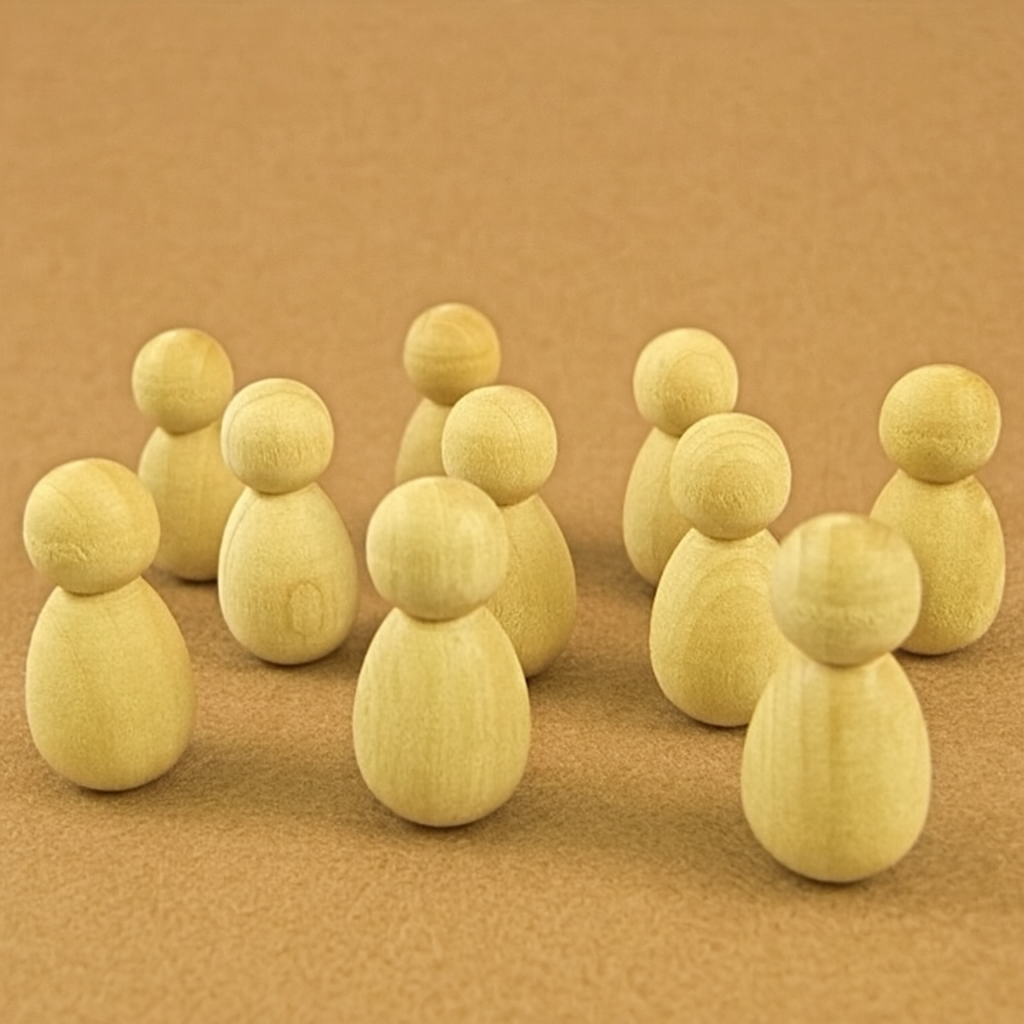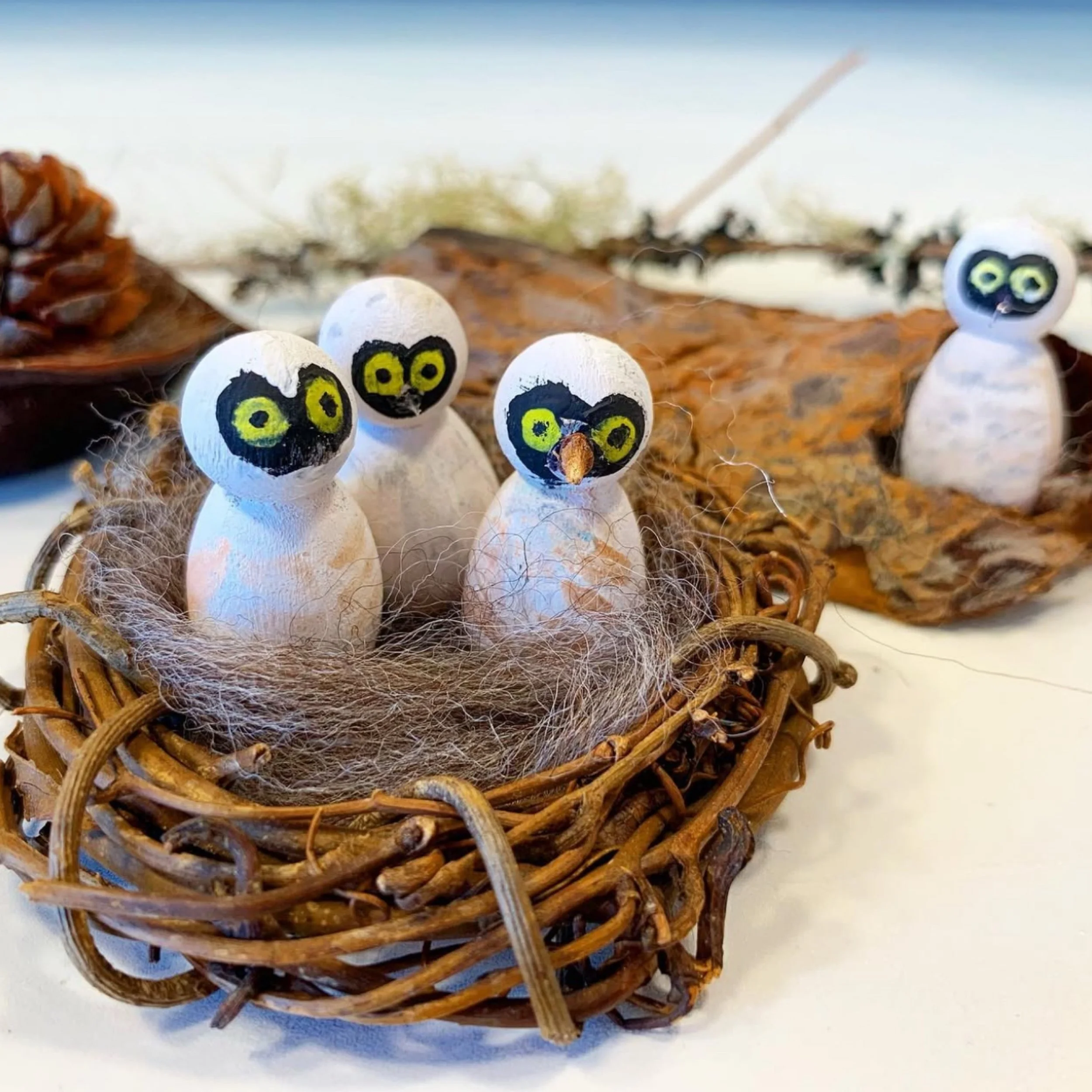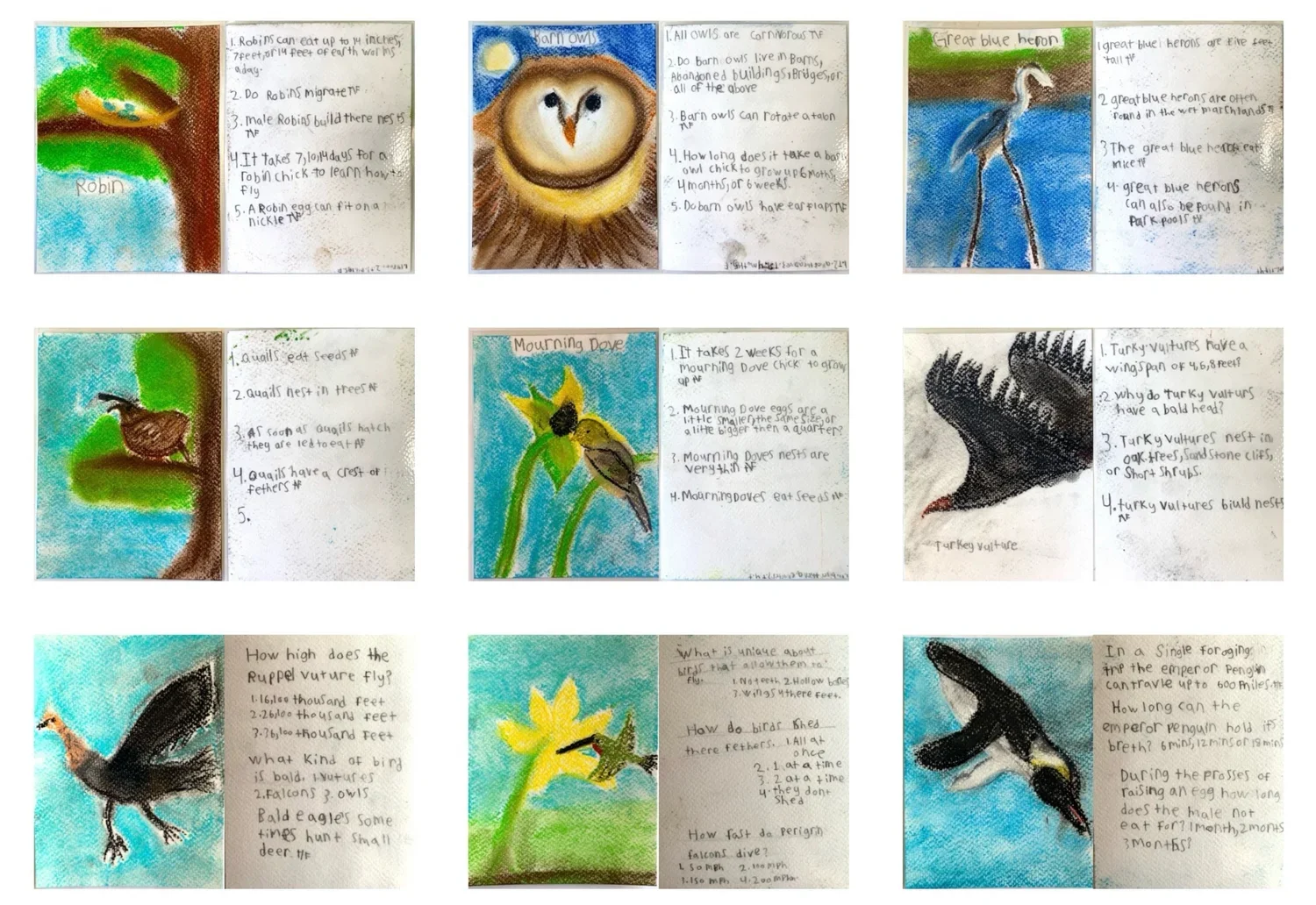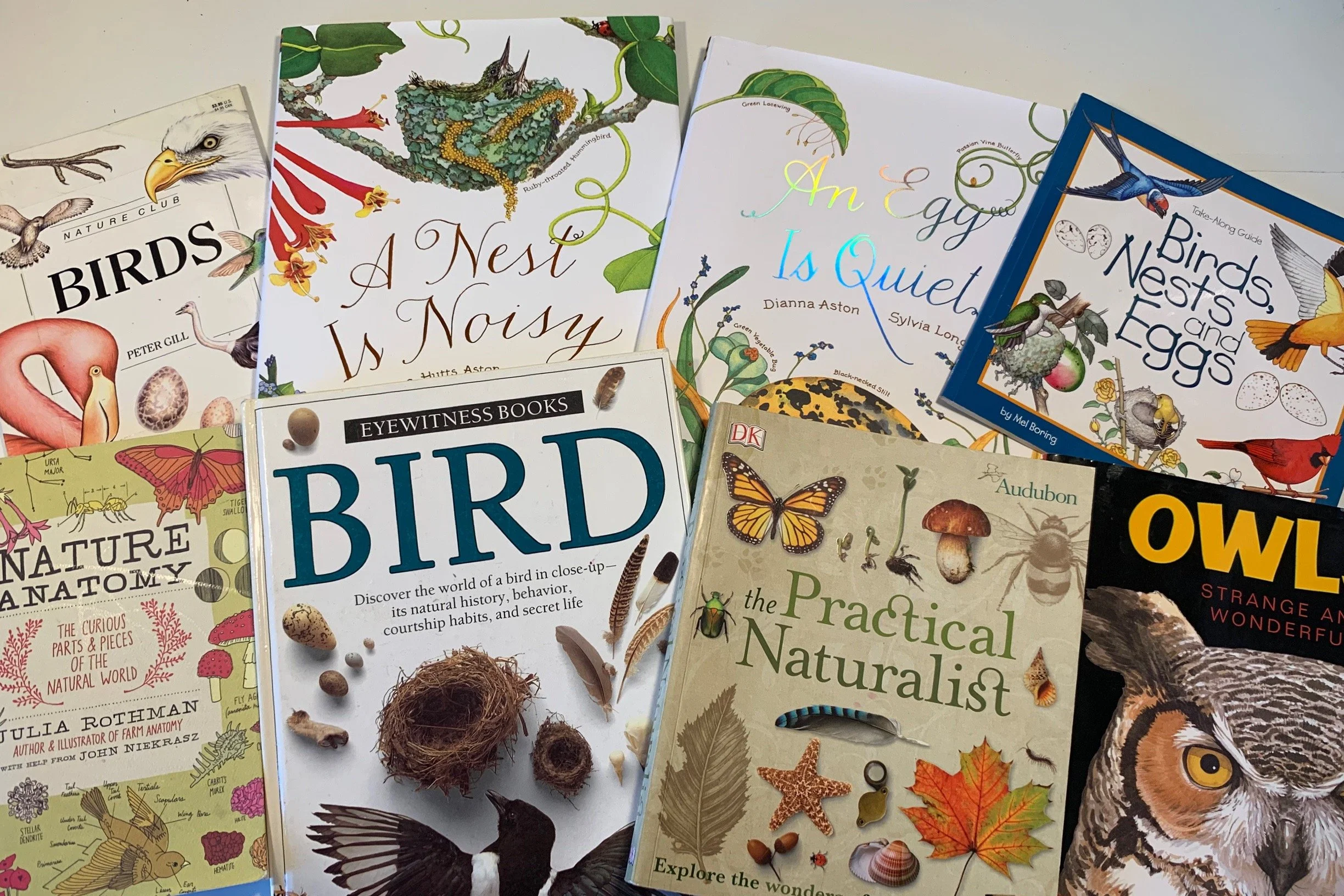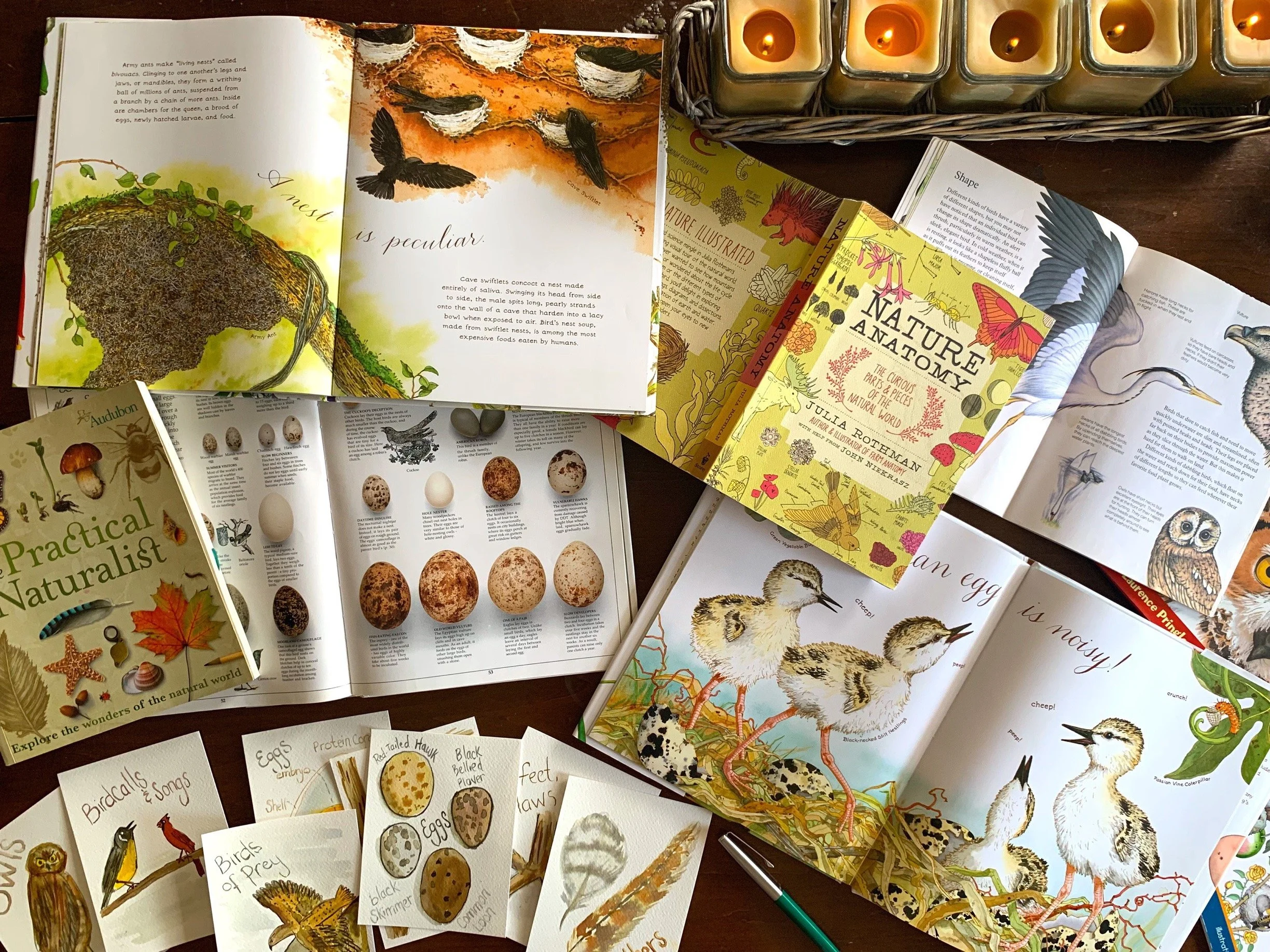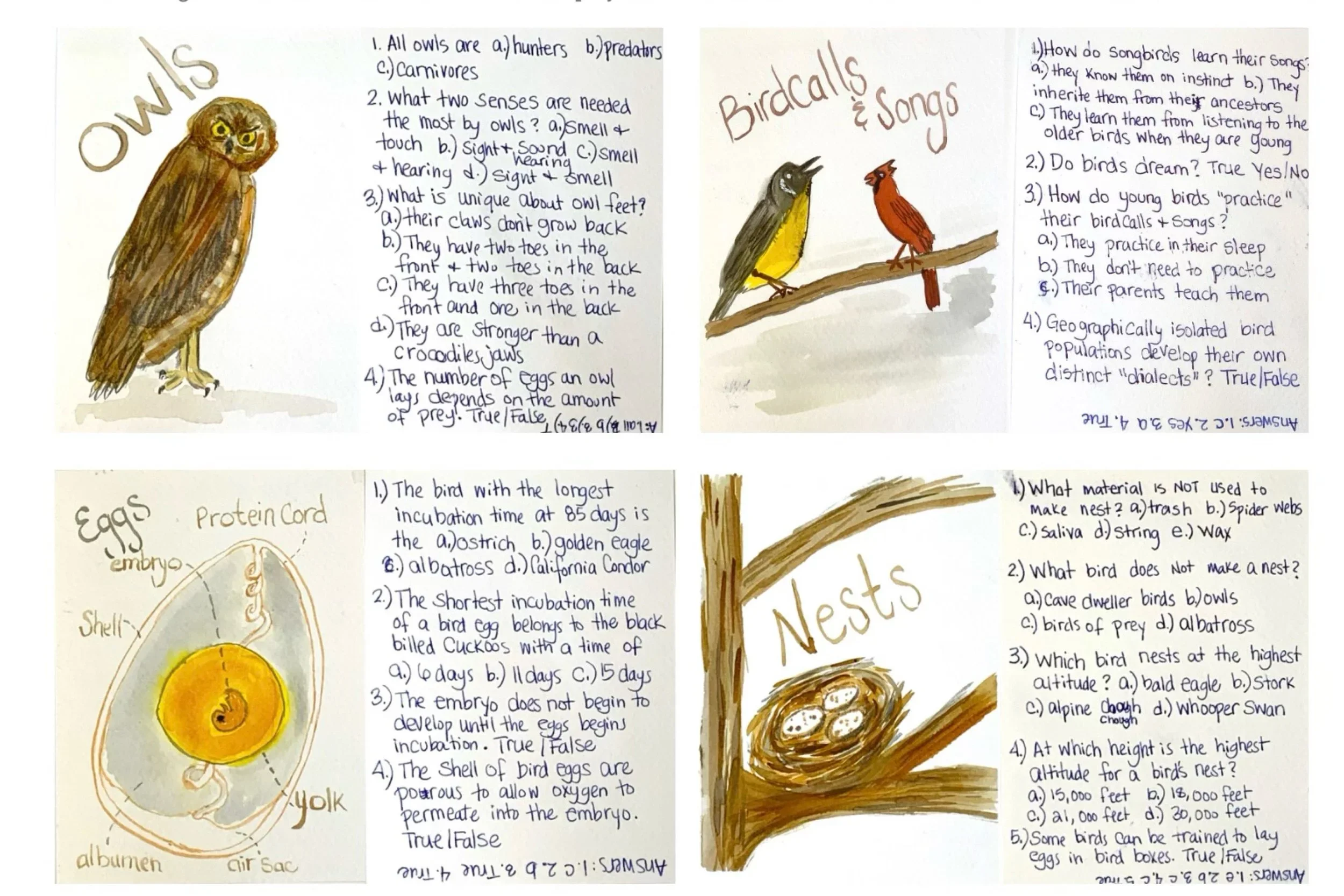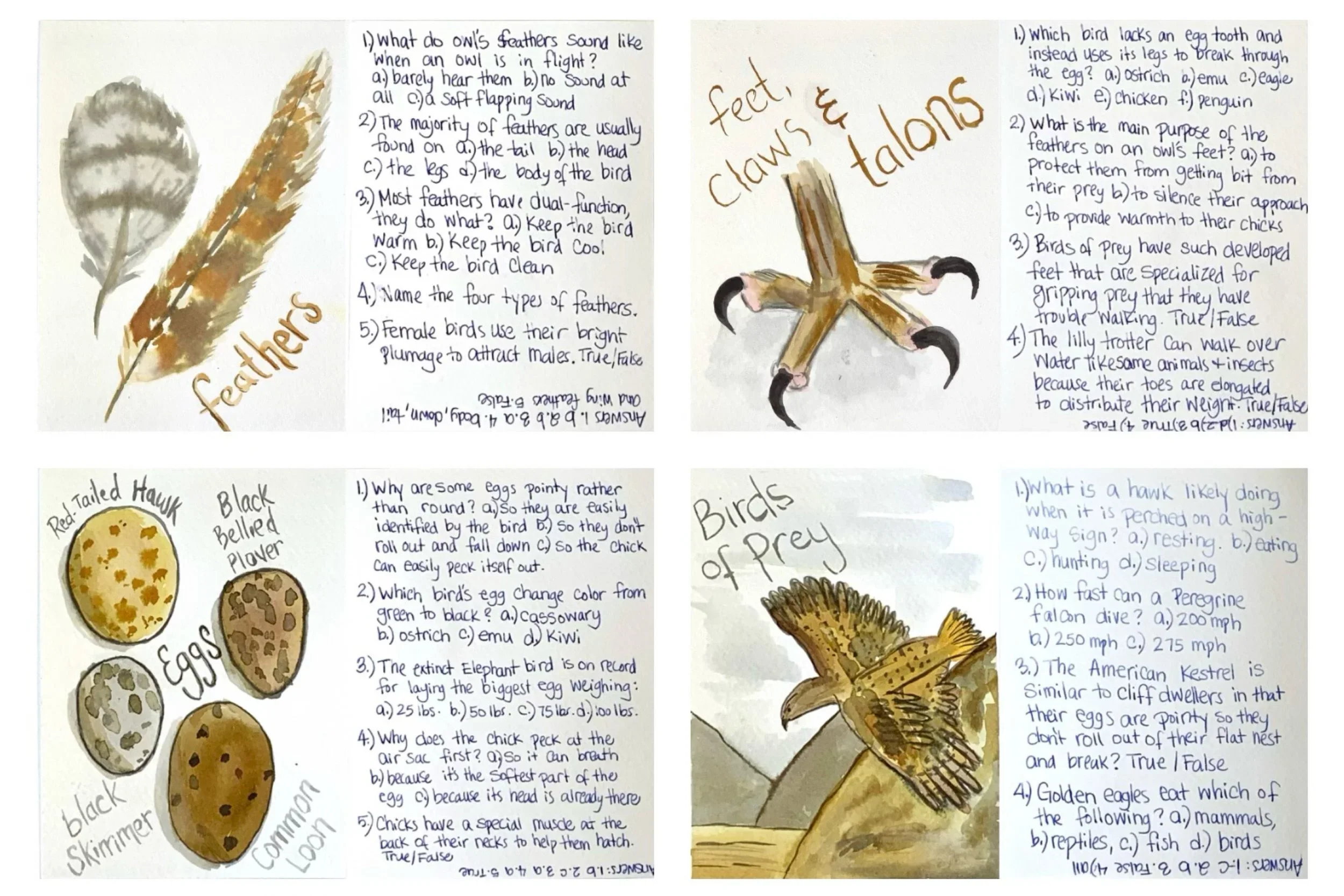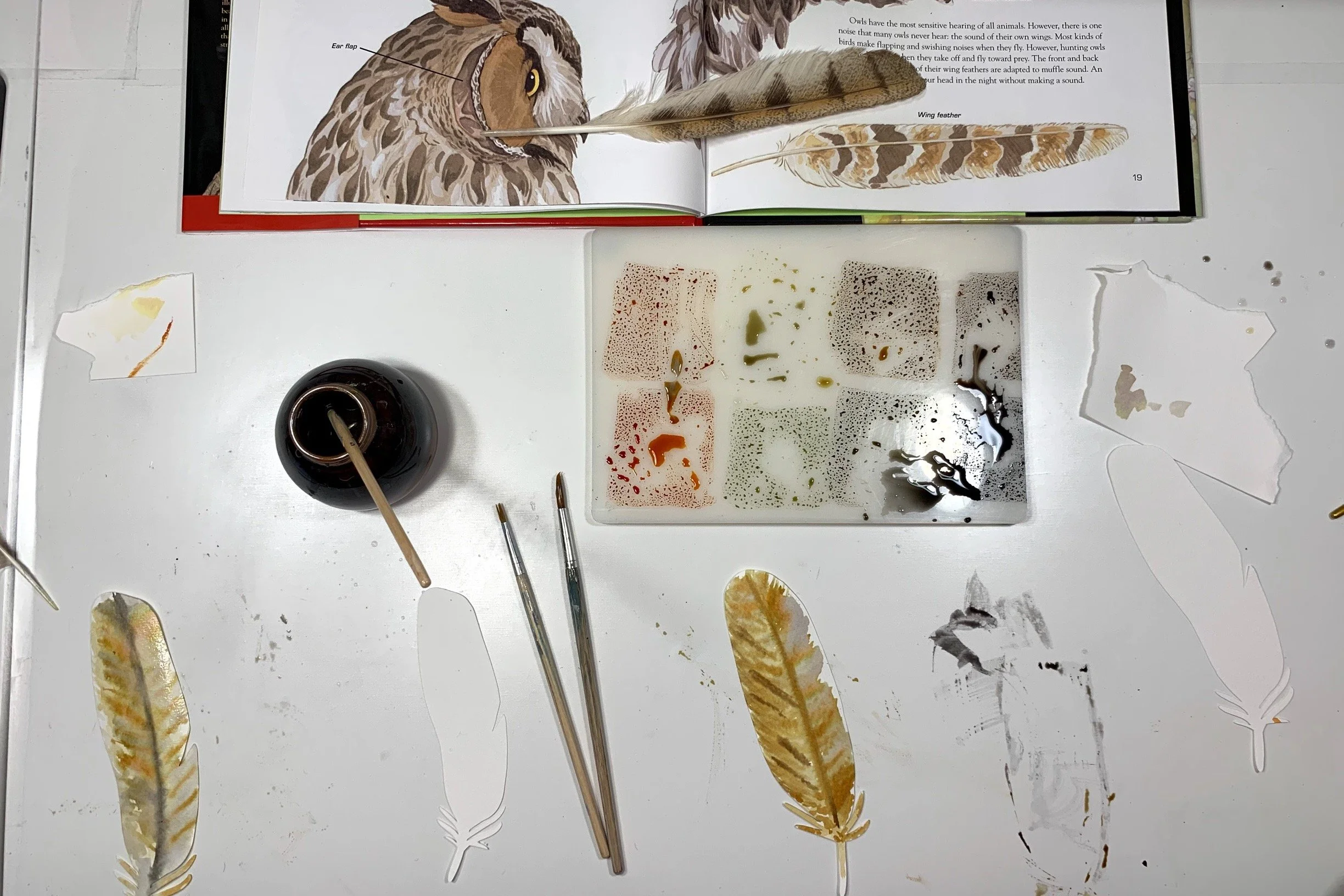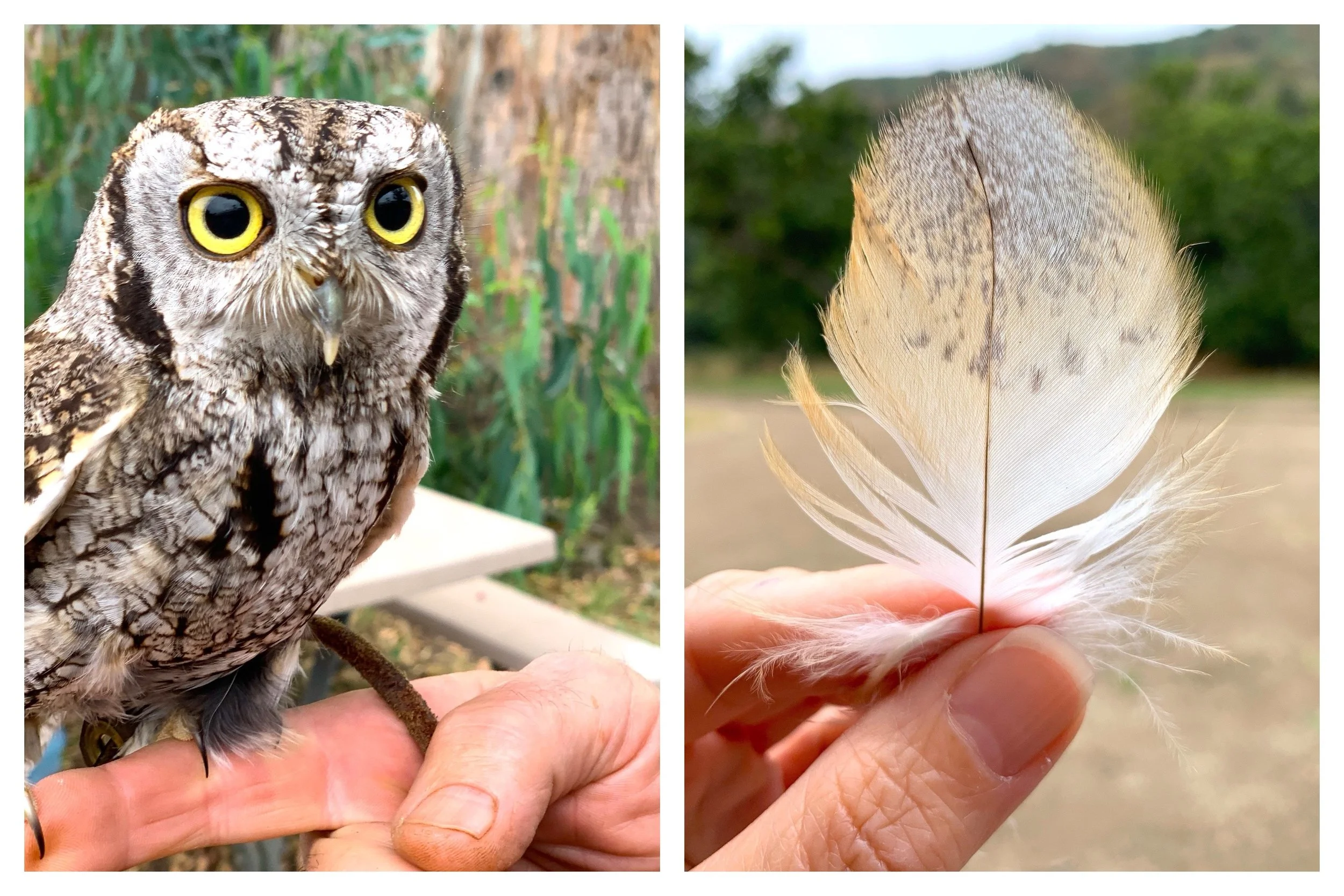
Owl Unit Study
Owl Unit Study
A unit study can be as broad or as specific as you would like it to be. While doing our bird unit study, we departed to do a smaller owl unit study. In part I was inspired by resources I had seen other homeschoolers using and was excited to include that into our bird unit. Once we included those resources into our bird unit, I realize that we had created a mini Owl unit.
With a mini unit study, I don’t source as many resources as a typical unit study. A mini unit study is also considerably shorter than a regular unit study. And lastly, I’m not looking for as broad of an exploration as I would with a typical unit study. In a typical unit study approach, I may include activity books, cookbooks, historical fiction, biographies, and more. When doing a mini unit study, I focus more deeply on the subject at hand.
For this owl unit, one of the highlights was going to our local Audubon Nature center where we got to see owls up close in first time. Additionally, we went on night excursions to listen for owls. Those two activities were probably more educational than all of the other lessons we did for this unit. And one of the perks is that since we’ve completed this unit, our ears and eyes are more tuned for noticing owls in their natural environment. And as we share a habitat with owls, we delight when we see or hear them.
Owl Unit Study
-
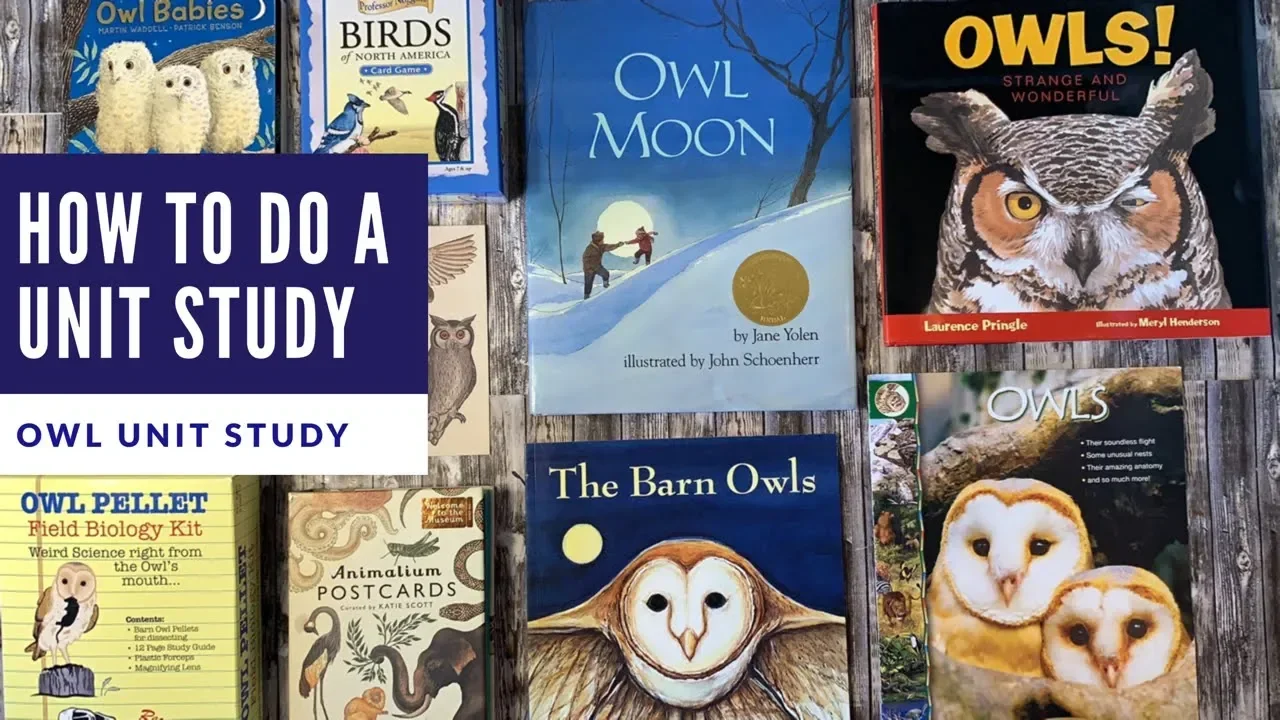
Owl Unit Study
Are you looking for a small unit study on owls? I've got you covered! I know my unit studies tend to be long, involved and contain a lot of books, but this one is small, with a few beautiful books, a couple projects and a game to start off the lessons.
-
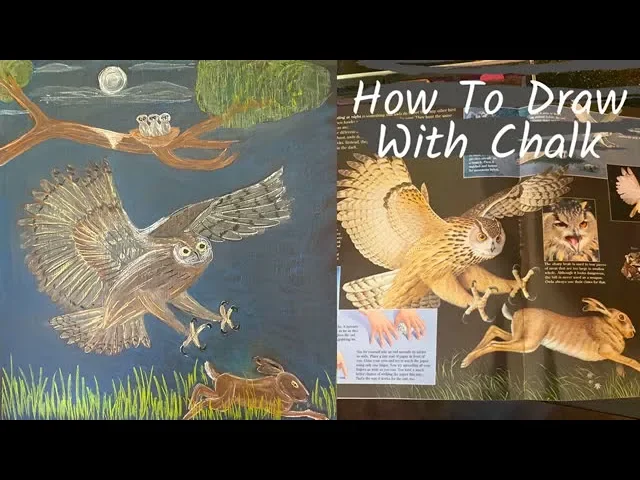
Chalk Drawing
Art inspiration for chalk drawings usually comes from material we plan to use in our unit study or main lesson block. The Chalk Drawing for our Owl Unit is one we plan to keep up for the whole duration of the unit.
-
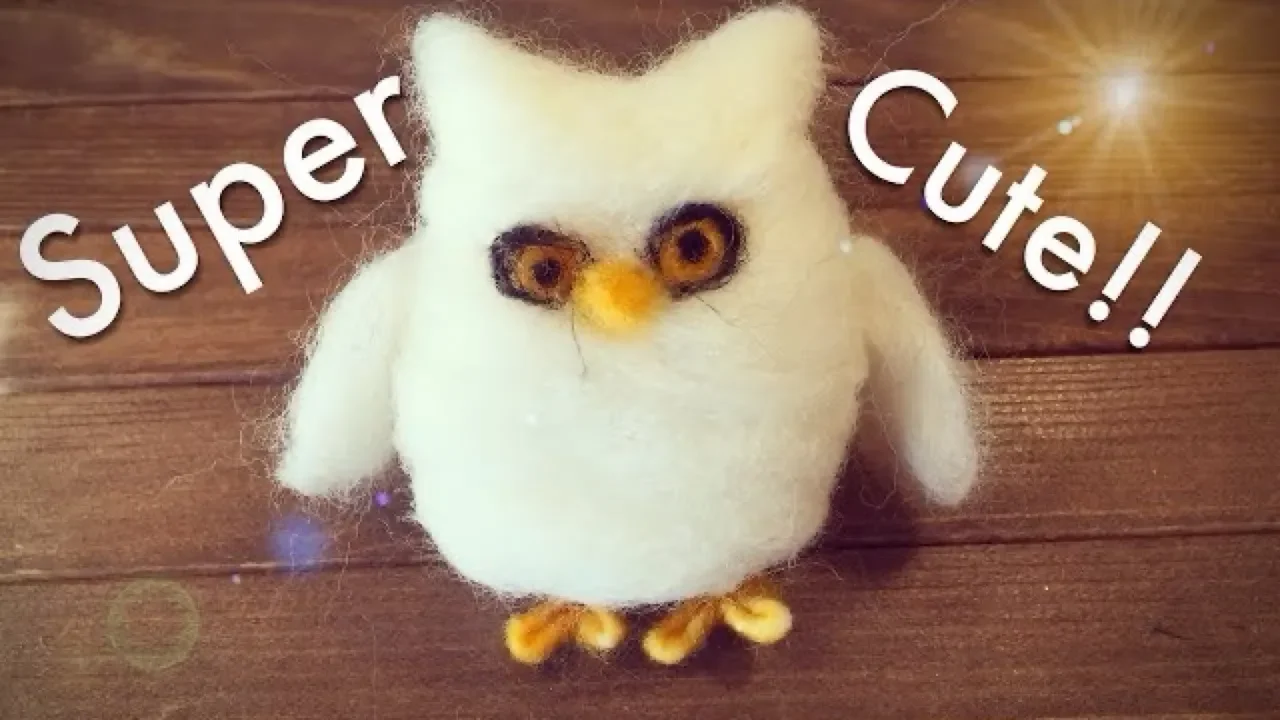
How to Make a Felted Owl
WoolPets are the best kits for beginners looking to try wool felting. The kits are also an amazing value, you can get at least 4 owls from this kit (the package says 2), and if they are a bit smaller, you can get 6 adorable owls :)
-

Owl Pellet Dissection | Full Rodent Skeleton
If you've never done an owl pellet dissection before, fair warning, it can be hard to stomach this activity. We took this project to the next level by assembling a complete rodent skeleton out of the remains we found in the owl pellet. While that wasn't our initial intentions, I'm really glad we did so, and I found it to be the most educational part of this project.
-
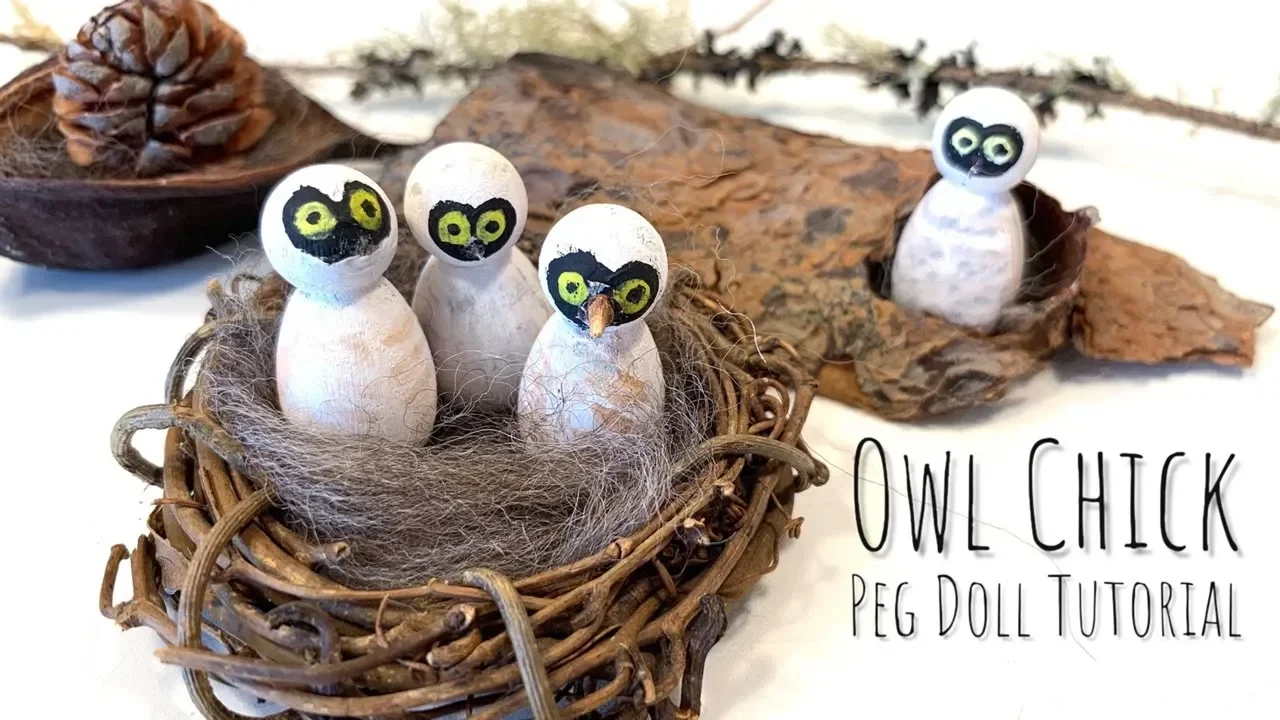
Owl Peg Doll Tutorial
Finding hands-on projects for our unit studies and main lesson blocks brings me so much joy, especially when we can make adorable owl peg dolls like these. They were pretty simple to do, but had their challenges.
-
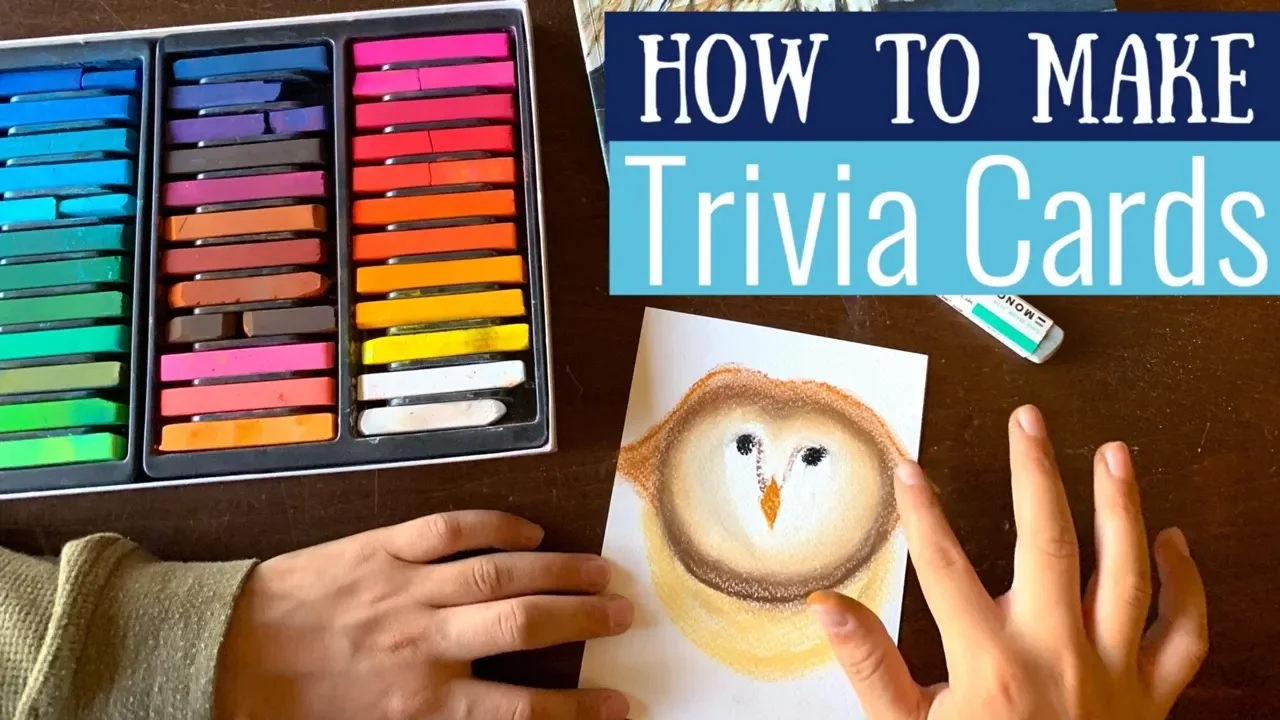
Trivia Cards For Owl Unit
We love our Professor Noggin's Trivia Cards, so making our own was not just a fun way to make a game we know we'll love but it was also a great way to add essential skills to our lessons: research, synthesis of information, handwriting and drawing.
-

How to Make Nature Study Flashcards | Homeschool Bird Unit Study
For years now I've noticed that our science units lack substantial written narrations. While some of our science units may include a fair amount of writing, most don't and we end up with unit after unit with the same blank main lesson book.
-
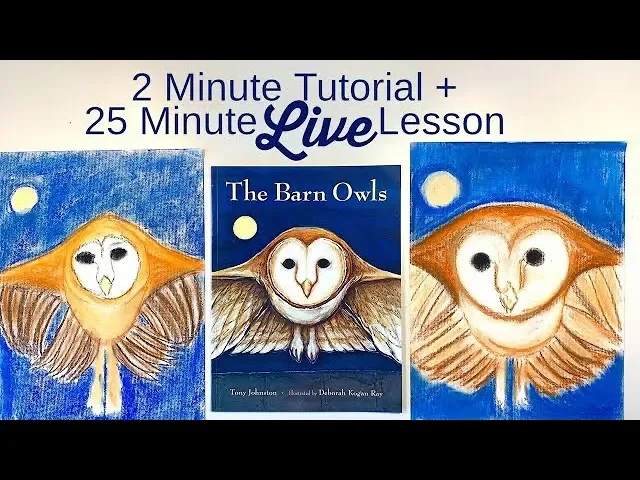
Owl Drawing Tutorial
Whenever possible, I incorporate art into our lessons. It's not a art lesson, rather it's a science lesson that's artistically depicted. Sometimes art is the perfect medium for a lesson and when it comes to nature science, I can't think of a better choice.
-
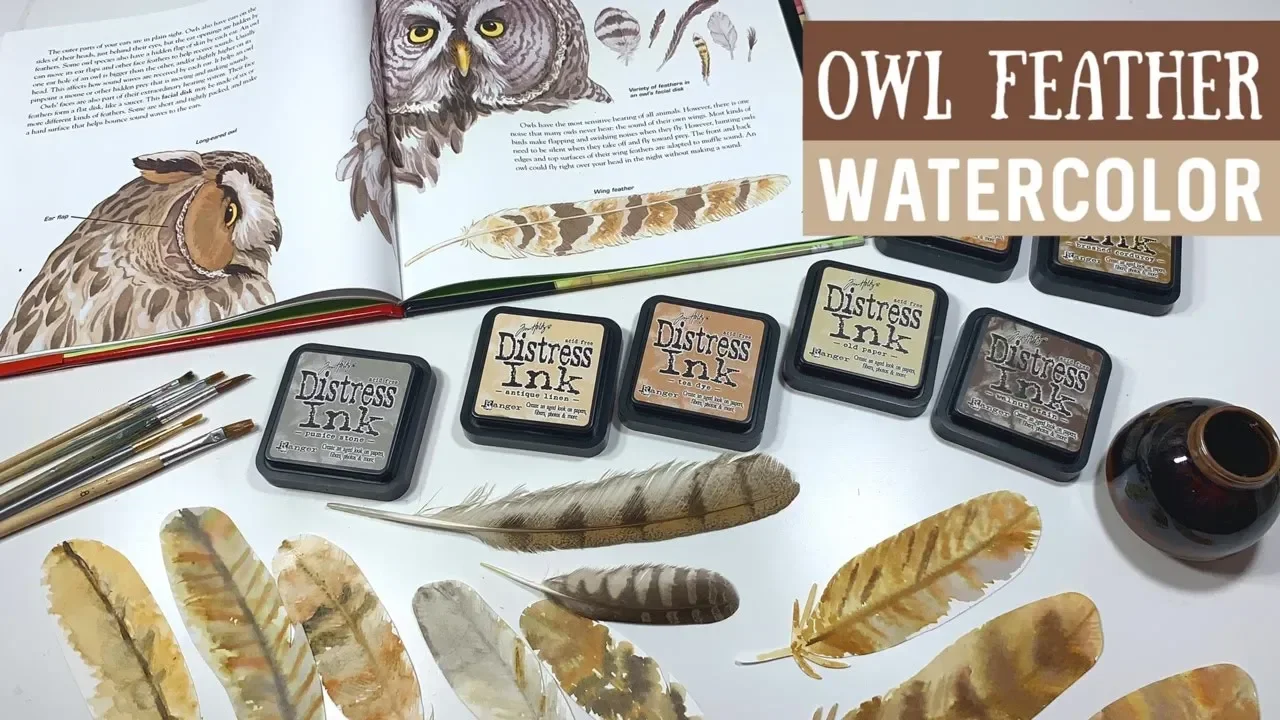
Owl Feather Watercolor
Whenever possible, I incorporate art into our lessons. It's not a art lesson, rather it's a science lesson that's artistically depicted. Sometimes art is the perfect medium for a lesson and when it comes to nature science, I can't think of a better choice. Each spring, we pull out our nature units, and I find that our main lesson books are either wholly empty or filled with magnificent watercolors.
-
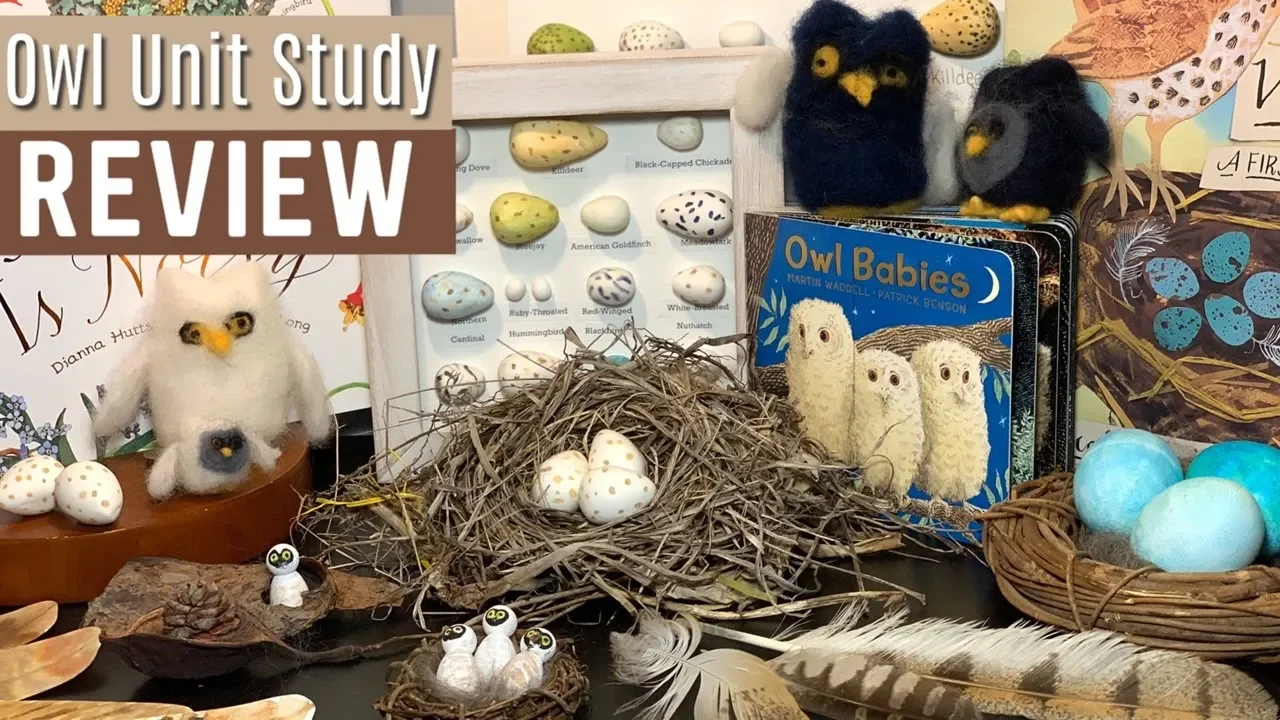
Owl Unit Study Review
At the end of most units, I like to share which resources we used, liked, and didn't like and share the projects we did.

Owl Unit Study
Owl Unit Study
Check out the video on how I put this unit together.
Are you looking for a small unit study on owls? I’ve got you covered! I know my unit studies tend to be long, involved and contain a lot of books, but this one is small, with a few beautiful books, a couple projects and a game to start off the lessons. I didn’t create a lesson plan for this unit, rather, I did more of a unit study ‘to do’ list. But first, let me show you how I purchased materials for this unit as well as other units in my homeschool haul video. These videos show you the materials I purchase for our homeschool as well as the materials that will become our unit studies and main lesson blocks.
Here's what we bought for this unit: Owl Babies by Martin Waddell Owl Pellets Field Biology Kit Birds of North America by Professor Noggin's The Barn Owls by Tony Johnston Owls by Zoobooks Owls Strange and Wonderful by Laurence Pringle Owl Moon by Jane Yolen Owl Felting Kit by WoolPets Animalium (optional) Animalium Postcards (optional)
These are the materials that made up the main content for this mini unit study.
When putting together unit studies, I generally start with a topic, in this case, owls. Next, I go to one (or several) of my favorite homeschool vendors and begin to build our unit by seeing what materials are available. One of my long standing favorite vendors is Rainbow Resource. I love that their material is carefully selected for the homeschooling family. I generally just search for the topic I’m creating the unit study for. In this case: Owls. I simply type that in. I don’t sort for type of material or grade level. I look at everything! I don’t create units according to grade level. Our units work for all grade levels KG-8th grade and in some cases even 9th or 10th grade. I also like sourcing science material from Acorn Naturalists and Nature Watch. Both vendors cater to out-of-the-box learning and homeschoolers. I love their selection as well and honestly get more excited about these units than my children! Lastly, I check Barnes and Noble and Amazon for books. And lately, I’ve been purchasing a lot of material from Amazon even though it’s not my first choice.
Chalk Drawing
Not every new unit or main lesson blocks gets a new chalk drawing and in some cases, one chalk drawing serves for several units as this one does. This chalk drawing has the image of an owl, the life cycle of a frog and a bee and beehive. While it's not my favorite chalk drawing, I think it serves the purpose of inspiring us throughout this unit and adds beauty to our homeschool space. Collected around the chalk drawing are the books and resources we'll be using for this series of units.
While this part of the chalk drawing only took 20 minutes, the owl took 65 minutes and the life cycle of a frog took 20 minutes bringing the grand total for this chalk drawing at 1 hour and 45 minutes. That may not seem too bad for a 4' by 6' drawing, but compared to other images, it was. Also, I can't say I love the bee part!! I do wish I would have made a hexagon pattern with a bee in the beehive. But there's always next time!
For this drawing, I used by Sargent Art Square Chalk Pastels as well as a number of resources as drawing inspiration. Materials for this unit were purchased using charter school funds and were purchased from Acorn Naturalists and Nature-Watch. Art materials were purchased from Waldorf Supplies and A Child's Dream.
How to Make a Felted Owl
WoolPets are the best kits for beginners looking to try wool felting. The kits are also an amazing value, you can get at least 4 owls from this kit (the package says 2), and if they are a bit smaller, you can get 6 adorable owls :)
Check out our Owl Unit Study for more projects and activities:
You can this kit and others at A Child's Dream.
You can also find them at Rainbow Resource.
The wool in this kit is the softest I've used. The projects are as mentioned, with this intermediate project really being for someone who's tried needle felting before.
The only thing you'll want to buy is a foam pad. It can find them at Jo-Ann and other fabric stores.
Give this project a try! It's perfect for a cold winter day :)
Though we didn’t pick up this kit with our supplies we got for our kindergarten curriculum recently, we did intend to add it to the KG schedule. Originally I had intended to make these owls with my 10 year old 5th grader for my kindergartener to play with, but before I had completed the set up for this project, my five year old had removed the directions, and make her own! I was really impressed. She did fantastic! So even though the package indicated this project is for 10 year olds and up, you can certainly modify it for a younger child.
Owl Pellet Dissection | Full Rodent Skeleton
If you’ve never done an owl pellet dissection before, fair warning, it can be hard to stomach this activity. We took this project to the next level by assembling a complete rodent skeleton out of the remains we found in the owl pellet. While that wasn’t our initial intentions, I’m really glad we did so, and I found it to be the most educational part of this project.
We used an Owl Pellet Field Biology Kit from Rainbow Resource. I highly recommend this one because the owl pellets were big and we found a lot of bones in them. We were also sent some owl pellets from a friend’s property and that gave us a chance to observe the differences between them. The smaller owl pellets contained fewer bones and needed to be prepared for safe dissection. To safely dissect owl pellets you find in the wild, wrap them in aluminum foil and bake them for 45 minutes at 350 degrees fahrenheit. This ensures that the bacteria and germs are killed. This is especially necessary if you are working in a classroom or with children. The downside to doing this (I believe) is that the owl pellets harden and became too difficult to dissect without soaking. The small owl pellets from the wild needed at least 15 minutes to soak in very hot water. This helped open up the owl pellets and made it easier to find the bones. However, there may be a bit of an odor when you soak your owl pellets. Also, you may find the wet fur and bones less pleasant than the dry ones. The texture does change when it’s all wet and if you are easily grossed out by these kinds of things, soaking the owl pellet will just make it worse for you!
Overall, we really enjoyed the process, and the owl pellet kit was a hit! The kit we bought contained three owl pellets, a magnifying glass, a pair of tweezers and most importantly, a field guide. The field guide was exceedingly helpful in helping us identify the bones and ultimately the type of animal the owl ate.
I think this kit is the perfect hands-on project to any owl or bird unit.
We mounted our skeleton on 90 lb. watercolor paper by Fabriano using Tombow mono adhesive. The adhesive we used is strong and dries clear. It also takes a long time to dry making it ideal for projects you may have to move things around for.
I framed it in a shadow frame box I picked up after Easter at PartyCity for only 50 cents. They were heavily discounted because the frame had an Easter image. I popped out the backing using an X-acto knife (the kids were not around and would not be allowed to do this part of the project) to cut along the back and separate the glue. I mounted the finished project using a glue stick. I’m not sure if the glue was acid-free, but I recommend that you check before using on a project like this. I used Gorilla Wood Glue to glue the frame onto the backing. I finished off the frame with a metal label plate from my scrapbooking stash.
I’m very pleased with how this activity and project turned out. It took the better part of one afternoon to do the initial dissection and the better part of a second day to finish the project and hang it in our school room. I kept the leftover undissected small owl pellets in the box along with the other materials for us to do in the future. Now that they are baked, I do think they’ll last a while.
We did pull out a few things from our own materials for this project: extra tweezers and magnifying glasses and boxes as well as petri dishes and paper plates for dissection. The kit recommends placing a piece of white paper under the dissecting owl pellet, but if you soak the pellet, I recommend something heavier.
I did this project with my 8-year-old daughter and 12-year-old son as part of a homeschool science unit study on Owls.
Check out our complete Owl Unit Study with videos on how we put this unit together, the resources we used and the projects we did.
Owl Peg Doll Tutorial
Check out the video tutorial on how to make these adorable owl chicks.
Finding hands-on projects for our unit studies and main lesson blocks brings me so much joy, especially when we can make adorable owl peg dolls like these. They were pretty simple to do, but had their challenges. Making the eyes were too hard for my 8-year-old daughter and 12-year-old son, so after they attempted, I helped them fix it up. The beaks were also really hard to do and while we found some solutions, I’m thinking they are eventually going to break off. While those small pieces are choking hazards for young children, these peg dolls babies are also very small and so I don’t recommend giving these to young children. Also, as we used a mix of Lyra Opaque watercolors (which I believe are safe for children), I don’t know about the acrylic paint we use to make the black around the eyes. For that reason, I advise you check the safety of your paints and keep these objects (whether painted or not), out of the hands of small children.
For the first time, I glued the peg doll base onto a small square of watercolor paper using a glue dot so the children and I would have an easier time painting them. I don’t know why it took me so long to figure that out! But oh did it make things easier.
I’m using peg doll babies and Lyra Opaque watercolors for this project. You can find these materials at A Child’s Dream. I used various materials for the beak.
Check out our complete Owl Unit Study with videos on how we put this unit together, the resources we used and the projects we did. You can also check out our larger Bird Unit Study which includes more projects and resources.
Trivia Cards For Bird Unit
We love our Professor Noggin’s Trivia Cards, so making our own was not just a fun way to make a game we know we’ll love but it was also a great way to add essential skills to our lessons: research, synthesis of information, handwriting and drawing. Coming up with questions requires looking at the information with a new different approach. In some ways it’s not only harder, it also helps solidify the information on a deep level.
This is the second time we’ve done a project like this. The first time was earlier in the year when we did our astronomy unit. We made trivia cards for all the planets and other astronomical occurrences. For that project we used our watercolors.
This time around we had a more difficult time making these trivia cards because we didn’t have resource material that was specific for each bird, instead we had a lot more general cards. If I were to do this project again, or if we continue this project moving forward, I would get books specifically on each bird we did a trivia card for, or rather, make trivia cards on general information about birds like feathers, eggs, flight and more.
For this project, we also opted to use our Sargent Art Chalk Pastels. This posed challenges as well because the chalk pastel easily smudges, so rather than do our drawing first and then write up the questions, we did the writing first followed by the drawing. This meant that if any mistakes were made in the drawing that didn’t suit the student, the whole card had to be done again. As my 12-year-old son doesn’t especially like handwriting, he made due with the drawings that weren’t exactly what he wanted.
How to Make Nature Study Flashcards
For years now I’ve noticed that our science units lack substantial written narrations. While some of our science units may include a fair amount of writing, most don’t and we end up with unit after unit with the same blank main lesson book. This time around, I opted to make our own Professor Noggin’s inspired trivia cards and they were a hit!! Not at first, mind you. At first they were not going well. Here’s what happened:
This started out as a project I intended to do with my 12-year-old son. We were going to make our own Professor Noggins inspired trivia cards. He made his with chalk pastels, and I was going to work along with him as I usually do when we do these types of projects.
But this time I didn’t. As a result, the process was less enjoyable, and I kept finding myself telling him to do his work rather than us naturally doing it together. It got frustrating at times because I felt the project was dragging on, and he was complaining about it a lot. But as we had no main lesson book entries for this unit, I was adamant that we have some kind of writing assignment. After struggling through 6 cards, I told him he could end there. But then as we continued our unit, I wanted him to do more. So I told him I would match him card for card if he continued. And at the end, we could have a competition. I chose to do mine with watercolors because I prefer that medium to chalk pastels for this kind of project.
I really got into it! But it was hard!!! Coming up with trivia questions is so hard!! I wanted them to be just challenging enough to bring a smile to my son’s face when he got it right. And so I poured over all our bird books trying to piece together just the right kind of questions, often forgetting which resource I found something in and frustratingly scouring all of them page by page so I could fact check.
I also asked Siri often for help, but she was useless. She’d read me my emails and tell where on google maps was an albatross’s nest 🤦♀️ I finally gave up on her and went directly to the Internet for some of the harder to find answers.
For this project, we used 140 lb. Fabriano Watercolor paper, a variety of paint brushes from a local craft store, various earthy and brown toned Distress Inks, and a lot of books and resources to help with art inspiration. We also used a fountain pen for the writing and eventually we’ll laminate our cards using our Black and Decker Laminating sheets and our Minc Machine to laminate them. The Minc machine is a foiling laminator so you can get a more affordable option for laminating.
We love using our Distress Inks as watercolors for our projects. Check out our other tutorials in which we’ve used our Distress Inks.
Owl Drawing Tutorial
Our live lesson with tutorial really shows how we go about doing art within a unit study.
Check out this lesson!
Whenever possible, I incorporate art into our lessons. It’s not a art lesson, rather it’s a science lesson that’s artistically depicted. Sometimes art is the perfect medium for a lesson and when it comes to nature science, I can’t think of a better choice. Each spring, we pull out our nature units, and I find that our main lesson books are either wholly empty or filled with magnificent watercolors. There’s limited writing and a lot more hands on projects.
For this lesson, we were inspired by the book “The Barn Owls” by Tony Johnston as well as the Animalium postcards. We pulled out several resources for this project including Zoobooks Owls and Nature Anatomy, but ended up finding the rich paintings in “The Barn Owls” the perfect inspiration for this art project.
For this project, we used our Sargent Art Square Chalk Pastels available at Blick as well as pastel paper from Waldorf Supplies.
At first, I tried using our oil pastels, but found blending them wasn’t working the way I hoped. After making a sample alongside my 8-year-old daughter, I pulled out our chalk pastels and tried this lesson again. This time we copied the image on the cover of “The Barn Owls”. I liked the results so much, we did another lesson a few days later. Once again we copied an image from the book “The Barn Owls”, but this time, my 12-year-old son didn’t complete his work because he was displeased with the results. Again a few days later, we scoured our resource material and opted to use Zoobooks for our final inspiration. We drew owl chicks in a nest and this time, my 12-year-old son completed his drawing.
Working with chalk pastels is satisfying but frustrating at the same time. You can’t erase, and very easily, you can get other colors onto your work if you’re not careful as the chalk gets on your fingers easily and if you blend with your fingers, you can mess up your drawing accidentally. What’s great about them is their vibrant colors and ease of blending. Layer a few similar colors together and then watch them blend naturally together as you smudge the chalk with your fingers or a blending tool. We found that our fingers worked best.
Once your drawing is done, it can easily be damaged if you don’t seal it with a sealant specially designed to seal pastels and other paint mediums. As we ran out of ours, I’m leaving these flat (unstacked) until they can be protected. Once protected, I’ll store them flat after displaying them on the wall of our homeschool room.
Check out our complete Owl Unit Study with videos on how we put this unit together, the resources we used and the projects we did. You can also check out our larger Bird Unit Study which includes more projects and resources.
Owl Feather Watercolor
Whenever possible, I incorporate art into our lessons. It’s not a art lesson, rather it’s a science lesson that’s artistically depicted. Sometimes art is the perfect medium for a lesson and when it comes to nature science, I can’t think of a better choice. Each spring, we pull out our nature units, and I find that our main lesson books are either wholly empty or filled with magnificent watercolors. There’s limited writing and a lot more hands on projects.
For this lesson, we were inspired by the book “Owls, Strange and Wonderful” by Laurence Pringle. The illustrations are glorious and the text is easy to follow along with and appropriately informative. There are several painted owl feathers, and I thought we could recreate the artwork.
For this project, I used my Silhouette Cameo to die cut feathers from Fabriano 90lb. watercolor paper. You can free hand feathers or skip it entirely and just paint!
We also used our Distress Inks in a variety of tans and browns.
Distress Inks for this project
After cutting the feathers, the children and I tried recreating specific feather patterns. While we had a nice time doing this, we found that accurately watercoloring the patterns was such a challenge!! In the end, it was an artistic representation of the lesson and definitely called on our powers of observation as we looked at the details of each feather.
We also had two feathers we got from nature class. The large one is a barn owl feather and the small one is a western screech owl feather.
While you can do this project with any kind of paint, I do recommend using watercolors for the beautiful translucent feel. We used our Distress Inks as watercolors for some and our Winsor Newton watercolors for others. I think both worked well.
Check out our complete Owl Unit Study with videos on how we put this unit together, the resources we used and the projects we did. You can also check out our larger Bird Unit Study which includes more projects and resources.
Check out this lesson!
Whenever possible, I incorporate art into our lessons. It’s not a art lesson, rather it’s a science lesson that’s artistically depicted. Sometimes art is the perfect medium for a lesson and when it comes to nature science, I can’t think of a better choice. Each spring, we pull out our nature units, and I find that our main lesson books are either wholly empty or filled with magnificent watercolors. There’s limited writing and a lot more hands on projects.
For this lesson, we were inspired by the book “The Barn Owls” by Tony Johnston as well as the Animalium postcards. We pulled out several resources for this project including Zoobooks Owls and Nature Anatomy, but ended up finding the rich paintings in “The Barn Owls” the perfect inspiration for this art project.
For this project, we used our Sargent Art Square Chalk Pastels available at Dick Blick as well as pastel paper from Waldorf Supplies.
At first, I tried using our oil pastels, but found blending them wasn’t working the way I hoped. After making a sample alongside my 8-year-old daughter, I pulled out our chalk pastels and tried this lesson again. This time we copied the image on the cover of “The Barn Owls”. I liked the results so much, we did another lesson a few days later. Once again we copied an image from the book “The Barn Owls”, but this time, my 12-year-old son didn’t complete his work because he was displeased with the results. Again a few days later, we scoured our resource material and opted to use Zoobooks for our final inspiration. We drew owl chicks in a nest and this time, my 12-year-old son completed his drawing.
Working with chalk pastels is satisfying but frustrating at the same time. You can’t erase, and very easily, you can get other colors onto your work if you’re not careful as the chalk gets on your fingers easily and if you blend with your fingers, you can mess up your drawing accidentally. What’s great about them is their vibrant colors and ease of blending. Layer a few similar colors together and then watch them blend naturally together as you smudge the chalk with your fingers or a blending tool. We found that our fingers worked best.
Once your drawing is done, it can easily be damaged if you don’t seal it with a sealant specially designed to seal pastels and other paint mediums. As we ran out of ours, I’m leaving these flat (unstacked) until they can be protected. Once protected, I’ll store them flat after displaying them on the wall of our homeschool room.
Check out our complete Owl Unit Study with videos on how we put this unit together, the resources we used and the projects we did. You can also check out our larger Bird Unit Study which includes more projects and resources.
Owl unit Study Review
At the end of most units, I like to share which resources we used, liked, and didn’t like and share the projects we did. Compared to other units, this unit was smaller and consisted of mostly hands-on learning opportunities. Check out the video for a complete look at the projects we did and a detailed review of the materials we used.
Here's what we bought for this unit: Owl Babies by Martin Waddell Owl Pellets Field Biology Kit Birds of North America by Professor Noggin's The Barn Owls by Tony Johnston Owls by Zoobooks Owls Strange and Wonderful by Laurence Pringle Owl Moon by Jane Yolen Owl Felting Kit by WoolPets Animalium (optional) Animalium Postcards (optional)
